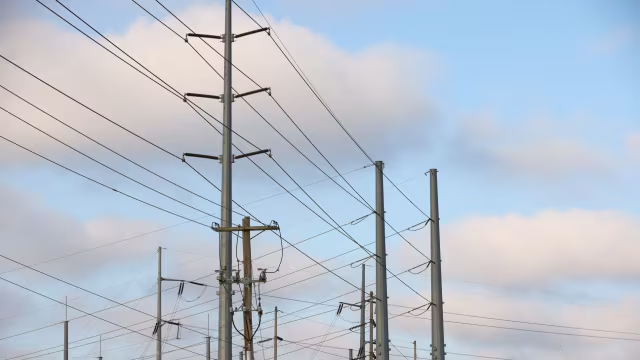Rajasthan News Desk!!! Bisalpur is the name that fulfills all the water needs of 1 crore people of Rajasthan’s capital Jaipur as well as Tonk, Ajmer, Kishangarh, Beawar and Jaipur rural. This is the dam with the highest water storage capacity in Rajasthan. More than 4 lakh farmers of 5 districts in Rajasthan depend on the water coming out of this dam with 18 gates. This dam has been constructed at the confluence of Banas, Khari and Dai rivers between the Aravalli mountain ranges near Bisalpur village.
The foundation stone of Bisalpur Dam was laid on 25 January 1985 by the then Chief Minister of the state Shiv Charan Mathur. Initially, the main purpose of building this dam was to supply water to Jaipur and Ajmer and to irrigate with the remaining water. The construction of Bisalpur Dam started in 1987 and was completed in 1996. At that time, the construction of this dam cost about Rs 300 crore. Talking about the catchment area of the dam, it is spread over about 28 thousand 800 square kilometers. Its total waterlogging area covers 21 thousand 300 hectares of land. A total of 68 villages come under the submergence area of Bisalpur Dam, out of which 25 villages are completely and 43 villages are partially part of it.
Bisalpur Dam is called the lifeline of Jaipur, Ajmer, Bhilwara, Tonk and Dausa. Bisalpur Dam is currently quenching the thirst of about one crore population of the state. Since the construction of the dam, water supply is going on continuously in Ajmer city as well as villages and towns of the district. At the same time, from the year 2009, Bisalpur Dam started giving drinking water to Jaipur city and rural areas as well. After this, from the year 2018, water supply from this dam was also started in Tonk, Deoli, Uniara areas. After this, water supply is being done from this dam in 438 villages and towns of these districts. Currently, about 480 MLD water is being supplied daily from the dam to Jaipur city, 330 MLD Ajmer, 52 MLD Malpura-Dudu, 53 MLD Chaksu and 50 MLD Bisalpur Tonk Uniara drinking water project to Deoli Tonk and Uniara cities and 436 villages and towns connected to it.
After the construction of Bisalpur dam, it was handed over to Bisalpur project from irrigation department in 1999. In 2001, under PHED, water supply was started in Ajmer, Beawar and other related districts by setting up pumping stations at Bisalpur intake and Thadoli. Meanwhile, in 2006, construction of the state’s biggest filter plant started in Surajpura near Thadoli, along with which a project of about 1100 crores was prepared for Surajpura filter plant and Jaipur water supply pipelines. In the first phase, the project was started in Surajpura in 2005 and a 2400 mm raw pipeline from Bisalpur intake pump, Surajpura filter plant, 400 MLD CWR and water supply pipeline from the plant to Balawala, Jaipur were constructed at a cost of 556 crores. After its completion, water supply was started in these areas from April 2009.
In the second phase, after the completion of Malpura-Dudu water supply pipeline and Jhirana-Niwai Chaksu pipeline in Bisalpur rural water supply project, rural water supply was started in the year 2012. After the demand for water increased, in the year 2019, the capacity of the plant was increased from 400 MLD to 600 MLD by constructing a 200 MLD CWR in the Surajpura filter plant premises at a cost of about 122 crores. Presently, 480 MLD water is being supplied to Jaipur from Surajpura filter plant and 53 MLD water is being supplied in the rural area through Malpura-Dudu water supply pipeline and 52 MLD through Jhirana-Niwai Chaksu pipeline.
The inflow of water in Bisalpur dam comes from Rajsamand, Chittorgarh, Bhilwara, Ajmer and Tonk districts, which are considered as catchment area. According to the engineers of the dam project, the main inflow of water in the dam is considered to be from Chittorgarh and Bhilwara districts, in which Banas river is the main source of inflow. Khari and Dai rivers also help in filling the water. Matrikundiya, Govta, Kothari, Jaitpura are the main dams before Bisalpur dam in Banas river.
The main source of water inflow in Banas is the famous Menal waterfall, whose water comes into the Govta dam. After the Govta dam overflows, the water joins the Menali river and reaches Triveni. In Triveni, Banas, Bedach and Menali rivers join to form Triveni Sangam and this is where the ancient temple of Mahadev is built, which is the center of people’s faith. Beyond the Triveni river, water starts in the form of Banas river, in which Kothari river, Oovli river, Nagdi river and other small tributaries join. And this water of Banas river reaches the Bisalpur dam. Triveni is considered to be the main source of water inflow in Bisalpur dam.
This multi-purpose dam is important for meeting the irrigation requirements in the western region of Rajasthan. Its canal irrigates about 2 lakh hectares of land, benefiting millions of farmers and increasing agricultural productivity. The dam has a hydroelectric power plant with an installed capacity of 162 MW. This plant contributes significantly to the power generation of the state. Bisalpur Dam plays a vital role in the development of Rajasthan. It raises the economy of the state and the living standards of the people by providing irrigation, drinking water supply, and power generation.
Bisalpur Dam is one of the major tourist destinations of Rajasthan. Tourists from many districts including Jaipur and Ajmer come here to see the view of water being released from the dam during monsoon and rain. The famous Gokarneshwar Mahadev temple located near Bisalpur Dam is the center of faith for millions of people. It is said that Ravana had meditated here for a long time. Due to this belief, there is a continuous flow of devotees in this temple during the month of Shravan.


